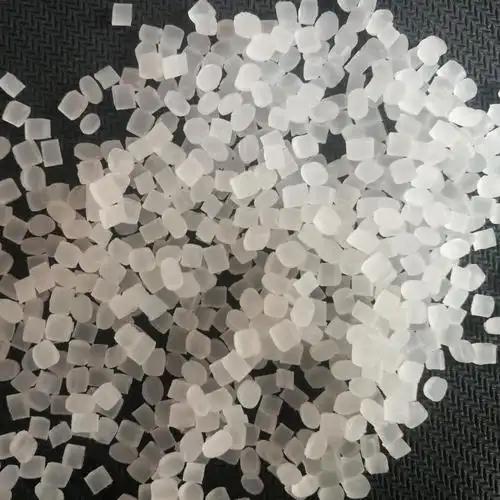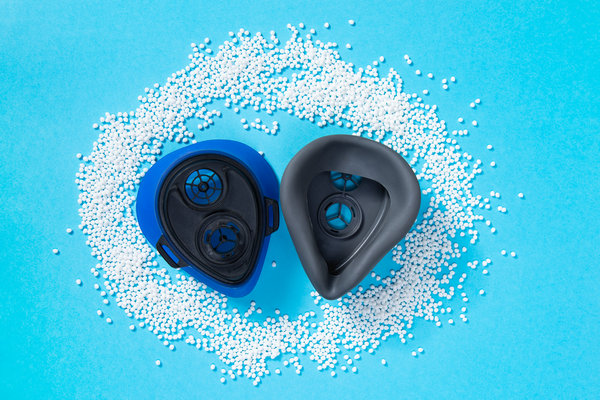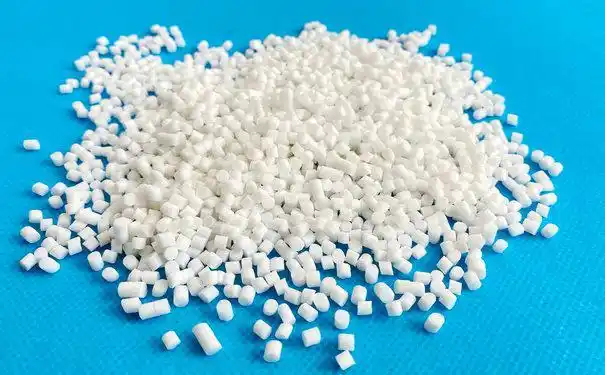Having spent over a decade in the materials industry, I’ve had the chance to dive deep into the world of Thermoplastic Elastomers (TPE), a fascinating class of materials that blend the flexibility of rubber with the processability of plastics. When people ask, “What materials go into making TPE?” they’re often trying to understand what gives TPE its unique properties or how it’s tailored for specific applications. From my experience working with manufacturers, engineers, and designers, I’ve learned that TPE’s composition is both complex and versatile, making it a go-to choice for everything from medical devices to car parts. In this article, I’ll break down the typical materials that make up TPE, share insights from my time in the field, and explain how these components shape its performance. My goal is to give you a clear, practical understanding of TPE’s makeup so you can make informed decisions for your projects.

Why TPE’s Composition Matters
Before we get into the nitty-gritty, let’s talk about why TPE’s composition is worth understanding. TPEs are known for their elasticity, durability, and ease of processing, but these traits don’t come from a single ingredient. Instead, they’re the result of carefully blending multiple materials to achieve the right balance of flexibility, strength, and cost. Whether you’re designing a soft-touch grip for a tool or selecting a material for medical tubing, knowing what’s in TPE helps you predict how it will perform, how it can be processed, and whether it meets regulatory or environmental standards.
In my years working with TPE, I’ve seen it used in countless applications, from stretchy yoga mats to precision seals in automotive systems. Each use case demands a slightly different formulation, and that’s where the magic of TPE’s composition comes in. Let’s explore the key materials that typically go into making TPE.
The Core Components of TPE
TPEs are a family of materials, and their composition varies depending on the specific type and intended use. However, most TPEs are made by combining a few core components: polymers, fillers, plasticizers, and additives. Below, I’ll walk you through each of these, drawing on examples from projects I’ve worked on to show how they come together.
1. Polymers: The Backbone of TPE
At the heart of every TPE is a polymer or a blend of polymers that provide its structure and core properties. TPEs are typically made from one or more of the following polymer types:
Styrene Block Copolymers (SBCs): These are the most common TPEs, often called TPE-S. They’re made from styrene and butadiene or isoprene, creating a material that’s soft, stretchy, and easy to process. I’ve seen SBC-based TPEs used in consumer goods like toothbrush grips because they’re cost-effective and feel great in the hand.
Thermoplastic Polyolefins (TPOs): TPOs are blends of polypropylene (PP) and ethylene-propylene rubber (EPR). They’re tough and weather-resistant, making them ideal for automotive parts like bumpers. I once worked with a car manufacturer that chose TPO for exterior trim because it held up well under UV exposure.
Thermoplastic Polyurethanes (TPUs): TPUs are made from polyurethane and offer excellent abrasion resistance and flexibility. They’re pricier but perfect for demanding applications like medical tubing or sports equipment. A client of mine used TPU for a wearable fitness tracker strap because it was durable and skin-friendly.
Copolyester Elastomers (COPEs): These are polyester-based TPEs with high heat resistance and strength. They’re often used in industrial applications like hoses. I’ve seen COPEs in action in high-pressure fluid systems where reliability was non-negotiable.
Thermoplastic Polyamides (TPAs): TPAs combine polyamide (nylon) with elastomeric components, offering toughness and chemical resistance. They’re less common but show up in specialized applications like high-performance cables.
The choice of polymer depends on the desired properties. For example, if you need a soft, rubbery feel, SBCs are a solid bet. If durability and chemical resistance are key, TPUs or COPEs might be the way to go.

2. Fillers: Enhancing Properties and Cutting Costs
Fillers are materials added to the polymer base to modify TPE’s properties or reduce production costs. In my experience, fillers are a game-changer for balancing performance and budget. Common fillers include:
Calcium Carbonate: This is a cost-effective filler that adds bulk and improves stiffness. I’ve seen it used in TPEs for packaging films where cost was a major concern.
Talc: Talc enhances rigidity and heat resistance. It’s often used in automotive TPEs to ensure parts can withstand high temperatures.
Glass Fibers: For applications needing extra strength, glass fibers are added. I worked on a project where glass-filled TPE was used for industrial seals to boost durability.
Carbon Black: This filler improves UV resistance and adds a black color. It’s common in outdoor TPE applications like garden hoses.
Fillers can make up 10-50% of a TPE formulation, depending on the application. Too much filler, though, can reduce elasticity, so it’s a delicate balance. I’ve advised clients to test filler levels carefully to avoid compromising the material’s performance.
3. Plasticizers: Adding Flexibility
Plasticizers are liquids or low-molecular-weight compounds added to make TPE softer and more flexible. Unlike PVC, where plasticizers like phthalates are common (and sometimes controversial), TPEs often use safer alternatives:
Mineral Oils: These are widely used in TPE-S to enhance softness and processability. I’ve seen mineral oils in TPEs for soft-touch grips, where a silky feel was essential.
Ester-Based Plasticizers: These are used in high-performance TPEs like TPUs for better chemical resistance. A medical device manufacturer I worked with chose ester-based TPEs for tubing to avoid phthalate concerns.
Polymeric Plasticizers: These are less common but offer better stability in high-temperature applications. They’re often used in industrial TPEs.
In my experience, the choice of plasticizer is critical for applications like medical or food-contact products, where safety and regulatory compliance are paramount.

4. Additives: Fine-Tuning Performance
Additives are the secret sauce that gives TPE its specialized properties. They’re used in small amounts but have a big impact. Common additives include:
Stabilizers: These protect TPE from UV light, heat, or oxidation. UV stabilizers are crucial for outdoor applications, like the TPE seals I’ve seen in solar panel installations.
Colorants: Pigments or dyes are added to achieve specific colors. I once helped a client customize a TPE for a vibrant red phone case that needed to stay bright over time.
Flame Retardants: These make TPE less flammable, which is essential for electrical applications. I’ve worked with TPEs for cable insulation where flame retardancy was a regulatory requirement.
Antioxidants: These extend TPE’s lifespan by preventing degradation. They’re especially important in automotive TPEs exposed to heat and chemicals.
Additives are tailored to the application, and I’ve learned that overusing them can drive up costs or affect processability. It’s all about finding the right mix.
Here’s a table summarizing the key components of TPE:
|
Component |
Examples |
Purpose |
Common Applications |
|---|---|---|---|
|
Polymers |
SBCs, TPOs, TPUs, COPEs, TPAs |
Provide structure and elasticity |
Grips, tubing, automotive parts |
|
Fillers |
Calcium carbonate, talc, glass fibers |
Enhance stiffness, reduce cost |
Packaging, seals, outdoor products |
|
Plasticizers |
Mineral oils, ester-based |
Increase flexibility |
Medical tubing, soft-touch grips |
|
Additives |
Stabilizers, colorants, flame retardants |
Improve performance, aesthetics |
Cables, colored products, outdoor use |
How TPE Formulations Are Developed
Creating a TPE isn’t just about mixing these components—it’s a science that requires precision. In my years working with material suppliers, I’ve seen how formulations are tailored to meet specific needs. Here’s how it typically works:
Defining Requirements: The process starts with understanding the application. For example, a client I worked with needed a TPE for a medical device that was flexible, biocompatible, and sterilizable. This led us to a TPU-based formulation with minimal additives.
Polymer Selection: The base polymer is chosen based on the desired properties. For instance, SBCs are great for cost-sensitive consumer goods, while TPUs are better for high-performance applications.
Blending and Compounding: The polymer is mixed with fillers, plasticizers, and additives in a compounding process. This is often done using twin-screw extruders to ensure uniformity. I’ve visited compounding facilities where precise control over mixing temperatures was critical to avoid degrading the material.
Testing and Iteration: The formulation is tested for properties like tensile strength, elasticity, and chemical resistance. I’ve seen projects go through multiple iterations to get the balance just right, especially for demanding applications like automotive seals.
This process can take weeks or even months, depending on the complexity of the application. It’s a reminder that TPE isn’t a one-size-fits-all material—its composition is highly customizable.

Factors That Influence TPE Composition
From my experience, several factors determine the exact materials used in a TPE formulation:
Application Requirements: A TPE for a yoga mat needs softness and grip, so it might rely heavily on SBCs and mineral oils. A TPE for an industrial hose, on the other hand, might use COPEs and glass fibers for strength.
Environmental Conditions: Outdoor applications require UV stabilizers and weather-resistant polymers like TPOs. I’ve worked on projects where TPEs were exposed to harsh sunlight, and UV resistance was a top priority.
Regulatory Compliance: Medical and food-contact TPEs must avoid harmful plasticizers like phthalates. I once helped a client navigate FDA regulations by switching to a phthalate-free TPU.
Cost Constraints: Budget often dictates the use of cheaper fillers like calcium carbonate. I’ve seen manufacturers cut costs by increasing filler content, but this can compromise elasticity if not done carefully.
Practical Insights from the Field
Over the years, I’ve picked up a few tips that might help you navigate TPE’s composition:
Work Closely with Suppliers: TPE formulations are complex, so collaborate with your material supplier to fine-tune the blend. I’ve had great success partnering with suppliers to develop custom TPEs for specific applications.
Test for Your Environment: Always test TPE in the conditions it will face. I once saw a TPE fail in a high-heat application because the formulation wasn’t optimized for temperature resistance.
Balance Cost and Performance: It’s tempting to skimp on high-end polymers or additives, but cutting corners can lead to failures down the line. I’ve advised clients to invest in quality for critical applications like medical devices.
Stay Updated on Regulations: Regulations around materials, especially in medical and food industries, change frequently. I make it a point to check for updates to ensure compliance.

Environmental and Safety Considerations
One thing I’ve noticed in recent years is growing concern about the environmental impact of materials. TPEs are generally considered eco-friendlier than some alternatives like PVC because they’re recyclable and often free of harmful additives. However, the choice of plasticizers and additives can affect safety. For example, I worked with a company that switched to ester-based plasticizers to meet stricter EU regulations for children’s toys. If sustainability or safety is a priority, make sure to specify this when working with your supplier.
Wrapping Up
Understanding the materials that go into TPE is key to unlocking its potential for your projects. By combining polymers like SBCs, TPOs, or TPUs with fillers, plasticizers, and additives, manufacturers can create TPEs that are tailored to specific needs—whether it’s a soft grip for a consumer product or a durable seal for an industrial application. My years in the industry have taught me that TPE’s versatility comes from this careful balance of components, and knowing what’s in the mix can help you choose the right formulation for your needs. I hope this deep dive gives you the clarity and confidence to make informed decisions about TPE.
Related Questions and Answers
Q: Are all TPEs made from the same materials?
A: No, TPEs vary widely in composition depending on the type (e.g., TPE-S, TPO, TPU) and application. Each formulation uses different polymers, fillers, plasticizers, and additives to achieve specific properties.
Q: Can TPE be made without plasticizers?
A: Yes, some TPEs, especially high-performance ones like TPUs, can be formulated without plasticizers by relying on the inherent flexibility of the polymer. However, plasticizers like mineral oils are common in softer TPEs like TPE-S.
Q: How do I know which TPE formulation is right for my project?
A: Start by defining your requirements for flexibility, durability, and environmental exposure. Then, work with a material supplier to select the right polymer base and additives. Testing prototypes is crucial to ensure performance.
Q: Is TPE safe for medical or food-contact applications?
A: Many TPEs are safe for these applications if formulated with biocompatible polymers and phthalate-free plasticizers. Always verify compliance with regulations like FDA or REACH for your specific use case.





